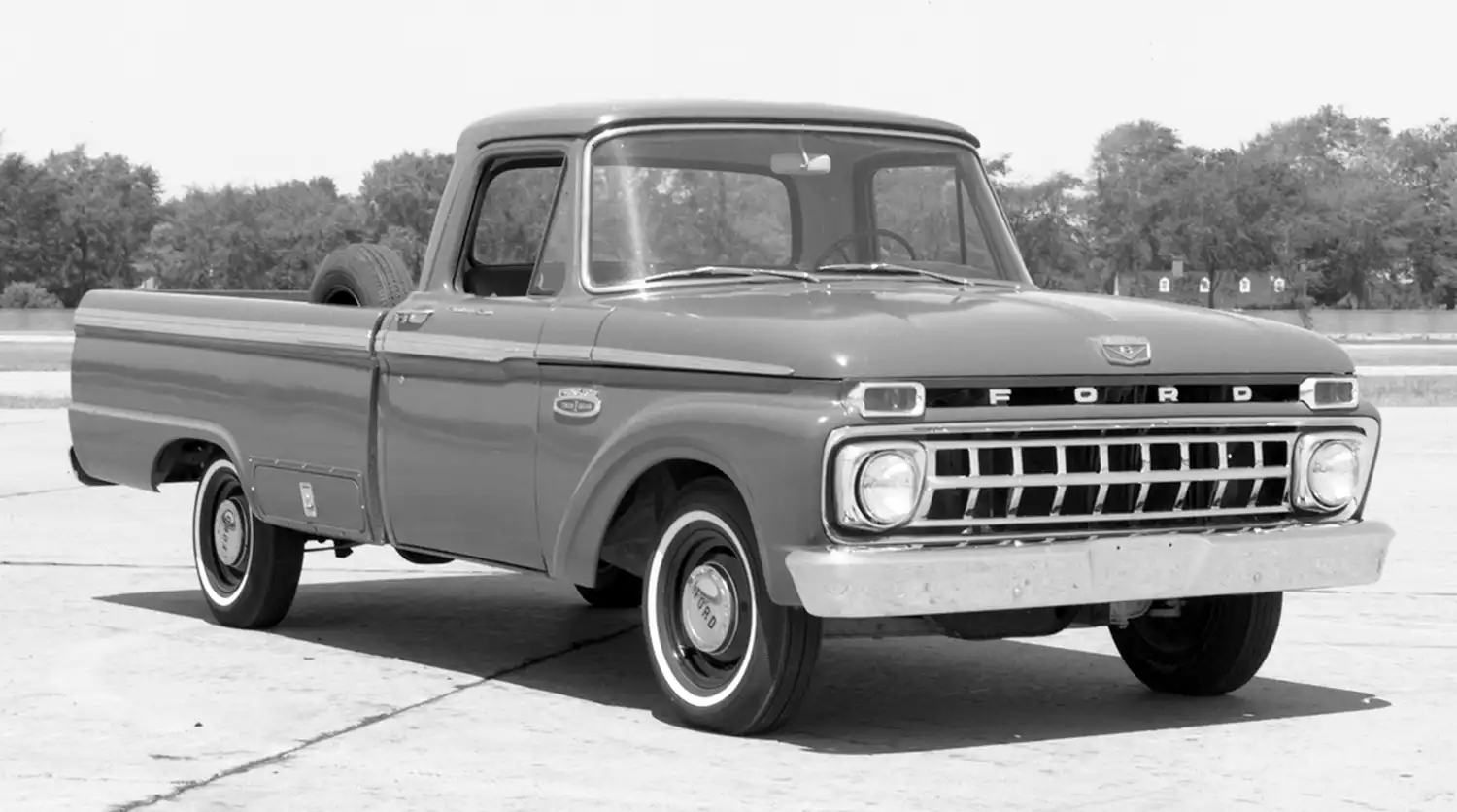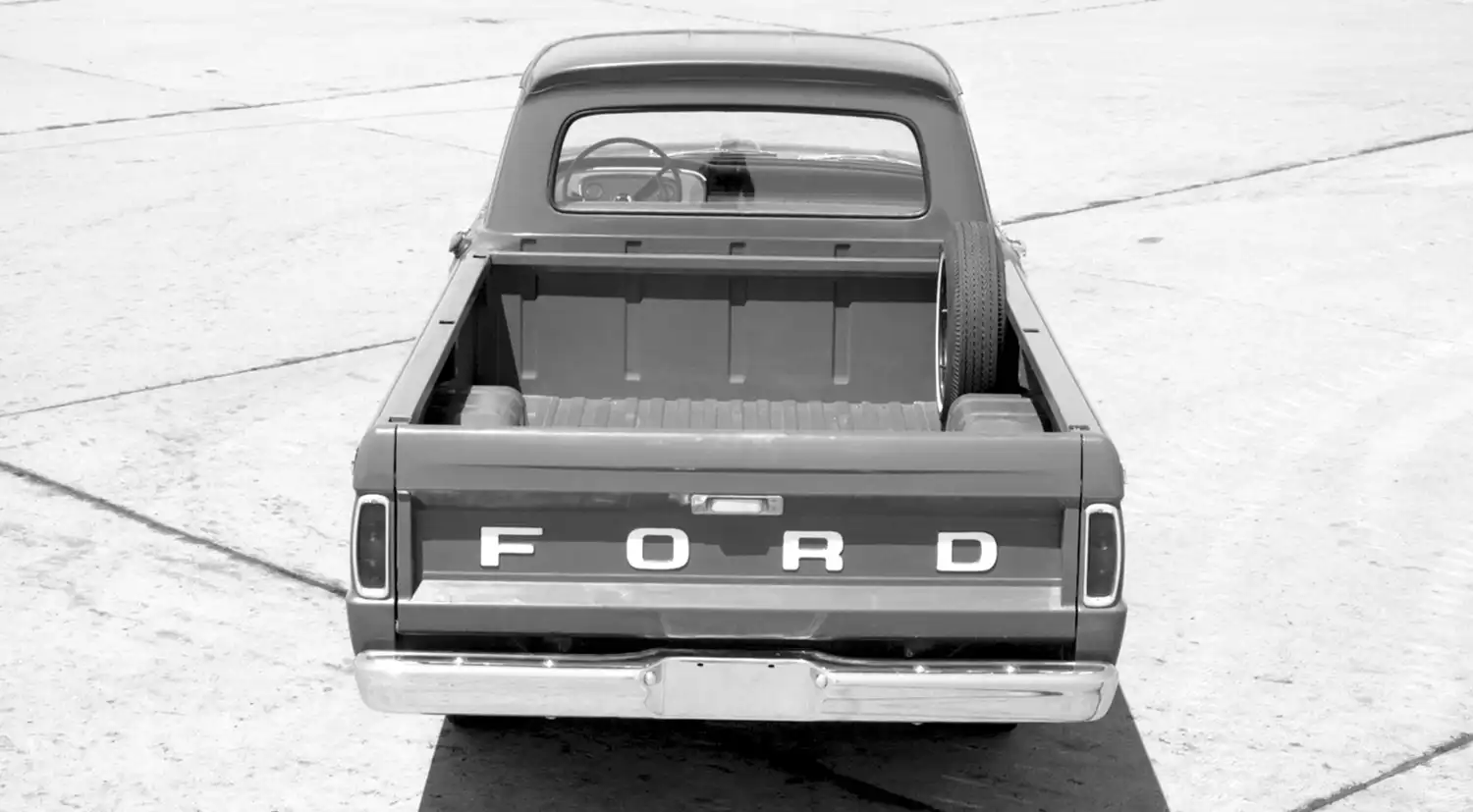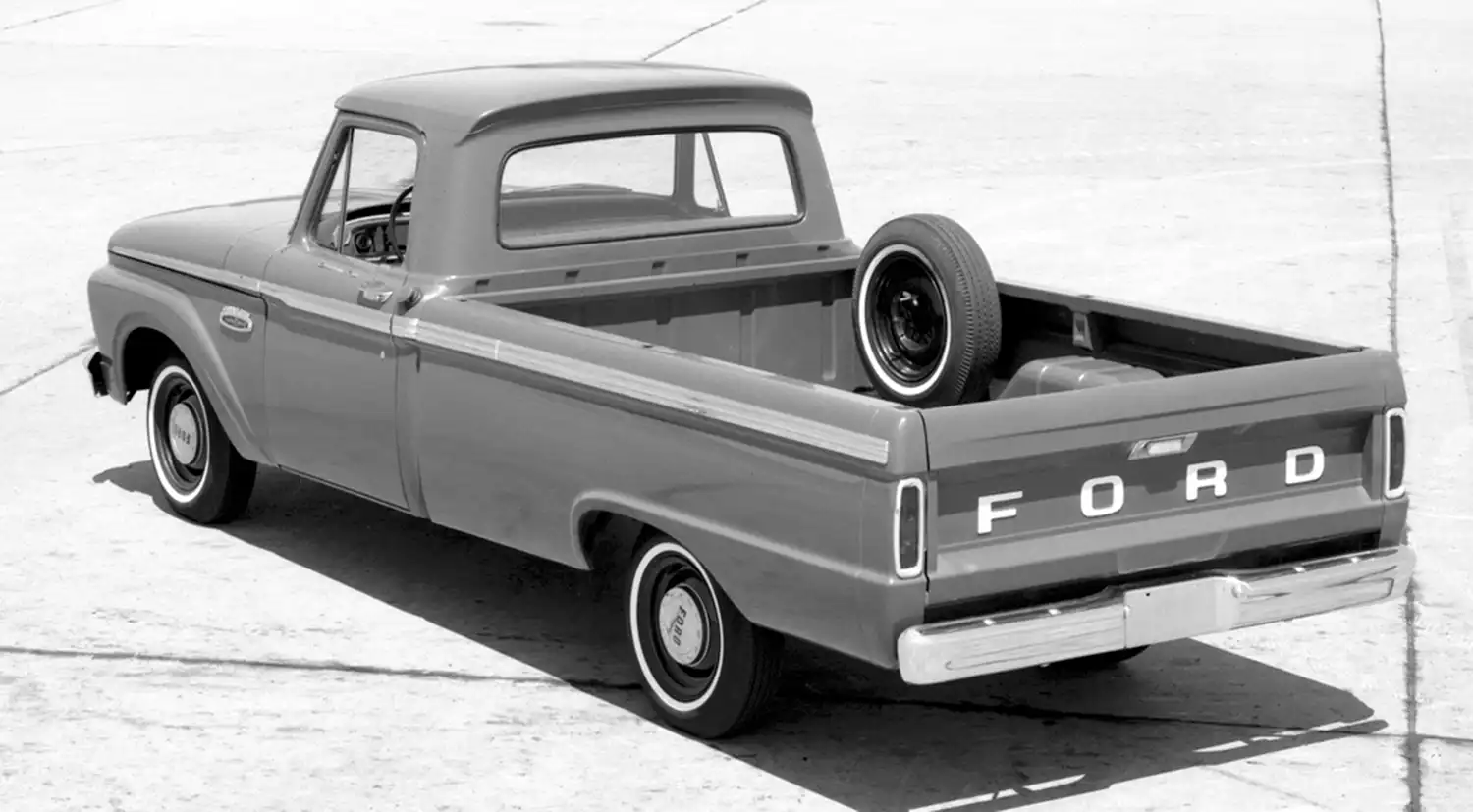
The 1965 Ford F-100 pickup truck holds a special place in American automotive history, representing a pivotal year in the evolution of Ford’s legendary F-Series. This model belongs to the fourth generation of the F-Series, which ran from 1961 to 1966. This generation marked a significant departure from its predecessors, introducing a completely new, integrated “Styleside” bed that was seamlessly incorporated into the cab, creating a more cohesive and modern appearance. The F-Series itself, first launched in 1948, quickly became a workhorse for farms, businesses, and families across the nation. By 1965, the F-100 had matured into a versatile and comfortable light-duty truck, blending rugged capability with an increasingly refined driving experience, solidifying its status as an enduring icon of American ingenuity and reliability.
Exterior Design and Styling
The 1965 Ford F-100 pickup truck showcases a design that perfectly balances functionality with a clean, understated aesthetic. Its most significant visual change from earlier generations was the introduction of the “Styleside” bed, which integrated the bed sides smoothly with the cab, creating a streamlined and contemporary look. This unified body design eliminated the separate rear fenders found on older “Flareside” models, offering a wider cargo area. The front fascia featured a distinctive grille with horizontal bars and prominent headlights, while the overall lines of the truck were clean and purposeful, reflecting its role as a dependable workhorse. The 1965 model maintained the robust and straightforward appeal that made these trucks so popular, with a clear focus on utility without sacrificing a certain rugged charm.
Interior Ergonomics and Comfort
Inside, the 1965 Ford F-100 offered a practical and unpretentious cabin, designed for durability and ease of use. While luxury was not its primary objective, Ford did aim to improve driver and passenger comfort with this generation. The interior typically featured a sturdy bench seat, often upholstered in durable vinyl or a basic cloth, built to withstand years of hard work. The dashboard layout was straightforward, with essential gauges for speed, fuel level, and engine temperature, ensuring the driver had all necessary information at a glance. Controls were robust and intuitive. Heating and ventilation systems were standard or optional, providing a more comfortable environment in various climates. The F-100’s interior was a testament to its utilitarian purpose, offering a no-frills, honest workspace that could double as a family hauler.

Chassis and Suspension
The 1965 Ford F-100 was built on a robust ladder frame chassis, designed for resilience and the ability to handle demanding tasks. As a light-duty truck, the F-100 featured a suspension setup that provided a balance between ride comfort and load-carrying capability. Typically, 2WD models utilized Ford’s innovative Twin I-Beam independent front suspension, which offered improved ride quality and steering precision compared to traditional solid axle setups. Rear suspension commonly consisted of a solid axle with multi-leaf springs, providing robust support for hauling payloads in the bed. This combination of a strong frame and a well-engineered suspension system contributed significantly to the F-100’s reputation for durability, stability, and its capability to perform reliably under varied conditions, whether on unpaved roads or highways.
Power and Performance
The 1965 Ford F-100 pickup offered a range of reliable and robust engine options, designed for work and longevity. Standard engines often included durable inline-six cylinder powerplants, such as the 240 cubic inch (3.9L) or the 300 cubic inch (4.9L) “Big Six,” known for their strong low-end torque and impressive reliability, making them ideal for truck applications. For those seeking more power, various V8 engine options were available, including the 289 cubic inch (4.7L) small-block V8, and potentially larger FE-series V8s in some configurations. These engines were typically paired with either a manual transmission (often a 3-speed or 4-speed, column-shifted or floor-shifted) or Ford’s reliable Cruise-O-Matic automatic transmission. This range of powertrains ensured that the F-100 could be configured to meet diverse needs, offering sufficient power for hauling, towing, and general utility work, further cementing its reputation as a dependable workhorse.
Utility and Versatility
The 1965 Ford F-100 was engineered first and foremost for utility. Its spacious Styleside bed provided ample cargo capacity, making it suitable for a wide range of tasks, from carrying construction materials to transporting agricultural goods. The F-100’s status as a half-ton pickup meant it was capable of handling substantial loads, making it a popular choice for both commercial and personal use. Beyond its cargo-carrying abilities, the truck’s robust construction and available four-wheel drive (in some configurations, though less common for F-100 base models) made it versatile enough for various terrains and challenging conditions. Its straightforward design and mechanical simplicity also contributed to its ease of maintenance and repair, a crucial factor for owners relying on their truck for daily operations.
Legacy and Collectibility
The 1965 Ford F-100 pickup truck enjoys a strong following among classic truck enthusiasts today. Its iconic mid-60s styling, combined with its reputation for ruggedness and reliability, makes it a highly sought-after collector’s item. These trucks are celebrated for their straightforward mechanics, which allows for relatively easy restoration and customization. Many examples are preserved as pristine originals, while others are transformed into custom street trucks or off-road machines, showcasing their inherent versatility. The F-100’s enduring legacy is a testament to its fundamental design soundness and its indelible mark on American automotive culture as a symbol of hard work and dependable transportation.
Summary:
- The 1965 Ford F-100 is part of the fourth-generation F-Series (1961-1966).
- Features the integrated “Styleside” bed for a modern, streamlined look.
- Interior designed for durability and functionality with basic comforts.
- Built on a robust ladder frame with Twin I-Beam front suspension (2WD).
- Offered reliable inline-six and V8 engine options (e.g., 240, 300, 289 V8).
- Provided versatile utility for hauling and various tasks due to its robust design.
- Highly collectible due to its classic styling, reliability, and ease of maintenance.
Disclaimer: This article contains general information about the 1965 Ford F-100 pickup truck for educational purposes. Specific vehicle conditions and features can vary; always conduct thorough personal verification.
Source: Ford Heritage Vault
AI Assistance: Gemini
